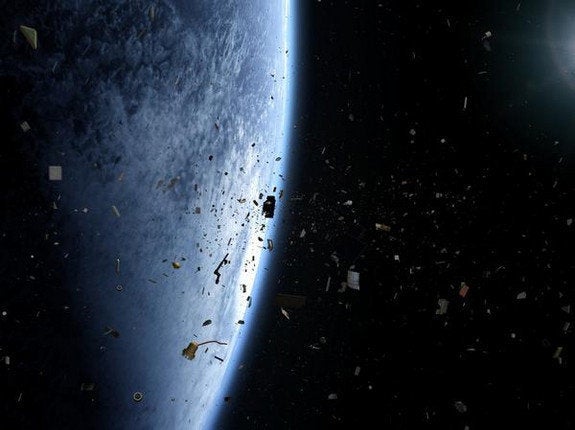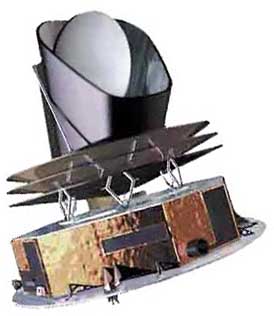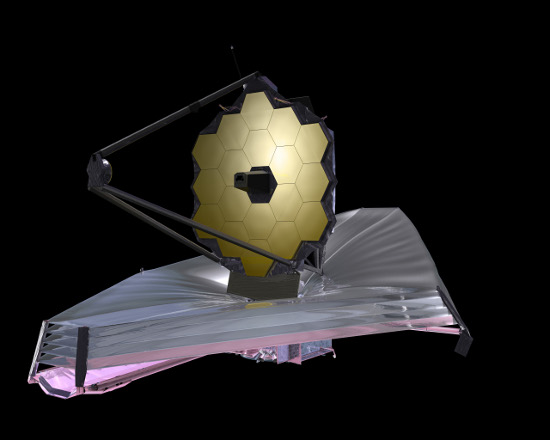
In my previous posting, "How Did Our Universe Begin?" I described the three main pieces of evidence showing that our universe started from a hot and dense state -- the Big Bang scenario. Those were (i) the expansion of the universe, (ii) the cosmic background radiation, and (iii) the abundances of light elements such as helium and deuterium. Cosmologists have used the Big Bang theory to examine how the fireball expanded and cooled, and how galaxies, clusters of galaxies, and the large-scale structure of the universe emerged from tiny fluctuations in the density of cosmic matter. These studies, however, did not initially address the questions of what actually happened in the Big Bang itself, or what caused the universe to "bang" in the first place. Moreover, the original model left some perplexing cosmic properties to chance. For instance, the temperature of the cosmic microwave background is the same in all directions, to an accuracy of better than one part in 10,000 (it is extremely isotropic). This suggests that the different parts of the cosmos have interacted to create an equilibrium. However, the time that had elapsed from the Big Bang to the time this radiation was emitted was far too short to allow for different parts of the universe to communicate with each other. (Einstein taught us that the fastest a signal can be transmitted from one point to another is the speed of light.) A second problem was that observations showed that the spatial geometry of our universe is flat to a high degree of accuracy.
In the early version of the Big Bang model, the stupendous uniformity in the temperature and density of the universe -- as well as its extreme flatness -- were assumed to simply represent the properties with which our universe was "born." Many physicists felt, however, that this could hardly be considered an "explanation." They were also extremely uncomfortable with the level of fine-tuning that was required of the primordial cosmos. This was the situation until 1980, when physicist Alan Guth proposed a solution to all of these puzzles with one bold idea. Guth suggested that the infant universe was caught in a peculiar quantum state called false vacuum. The most remarkable property of this false vacuum is that it produces a repulsive force of gravity. Unlike normal gravity, which causes every piece of the cosmos to be attracted to every other, repulsive gravity causes the universe to expand exponentially at an accelerating pace. Within a tiny fraction of a second, this inflation, as Guth called it, expanded the universe from a speck to astronomically relevant dimensions. But this was not all. The false vacuum state was unstable in Guth's inflationary model. As it decayed, marking the end of inflation, it released its energy to produce a hot fireball of elementary particles -- the subatomic constituents of our world. From there on the universe continued to expand, by inertia, at a more leisurely pace.
The beauty of Guth's idea was that in one shot, in addition to explaining the expansion itself and the hot initial state, it also offered solutions to the remarkable isotropy of the microwave background and to the flatness of the universe. The problem with the isotropy was that the distances between some points in the observable universe appear to have always been greater than the distance light could have traveled since the Big Bang. In the inflationary model, however, the expansion of a tiny region was accelerating, so even regions that were eventually out of each other's reach must have interacted in the past. The flatness problem also disappeared. Since inflation expands the universe by a huge factor, we can only observe a tiny part of it. That part appears flat, just as a small piece of the surface of the Earth appears flat to us.
I do not want to leave you with the impression that all the problems associated with the Big Bang model have been solved. Inflation encounters difficulties in the details. However, the WMAP satellite has demonstrated that some important predictions of the inflationary scenario (e.g., concerning flatness) are fully consistent with observations. Once the Planck satellite (Figure 1) releases its first results early next year, we will know whether other predictions (e.g., about the existence of certain patterns in the cosmic microwave background) are confirmed as well. The James Webb Space Telescope (Figure 2), to be launched in 2018, will provide us with invaluable information about the universe when it was a few hundred million years old -- in particular, it will show us the very first galaxies. It will also discover the most distant supernovae -- those resulting from the evolution of the first generation of stars. Questions will undoubtedly remain, and chief among them are: Did the universe appear out of nothing? And if it did, how was that possible? I will attempt to address these questions in my next posting.

Figure 1. The Planck space observatory of the European Space Agency, designed to observe the anisotropies of the cosmic microwave background
(http://upload.wikimedia.org/wikipedia/commons/5/50/Planck_satellite.jpg/).

Figure 2. The James Webb Space Telescope is designed to observe the very first galaxies to have formed in the universe. Credit: NASA.